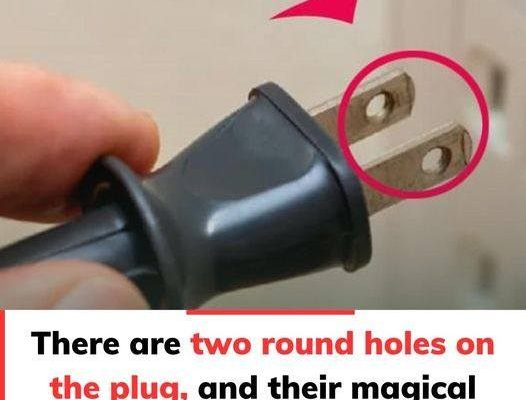1. Ensuring a Secure Connection
The primary purpose of the two small holes is to help secure the plug in place once it’s inserted into an outlet. Inside a typical electrical socket, there is a raised section designed to fit perfectly into these holes. This connection helps the prongs of the plug make better contact with the metal strips inside the outlet, ensuring a steady flow of electricity.
This secure fit not only keeps the plug from slipping out easily, but it also helps maintain consistent contact with the power source. This is particularly useful in homes or workplaces where plugs may be accidentally jostled or moved, as it minimizes the risk of interrupted power or loose connections.
2. Enhancing Safety, Especially for Kids
Another important feature of these holes is their contribution to electrical safety, particularly in homes with young children. Some electrical outlets use the holes to “lock” the plug into place, which prevents it from being easily pulled out. When a plug is partially removed from the outlet, it can expose the metal prongs, creating a dangerous shock hazard. Keeping the plug securely in place with these holes reduces this risk.
Round-pronged plugs that don’t have these holes might not fit as securely into outlets, leaving a portion of the prong exposed. This can be particularly hazardous for small children who might touch the exposed prongs, potentially resulting in an electrical shock. To prevent this, flat-pronged plugs with holes are recommended, especially for homes with little ones.
3. Helping Differentiate Between New and Used Products
Another lesser-known use for these holes is in packaging and product identification. Many manufacturers use the holes to attach seals or tags to the prongs of electrical products. These seals are designed to break when the plug is inserted into an outlet for the first time, helping customers distinguish between new, unused products and those that may have been previously used or opened.
This system gives consumers confidence that the product they’ve purchased is brand new, particularly for electronic devices that might be more expensive or delicate.
4. Saving Material in Manufacturing
Although the holes may seem small and insignificant, they actually serve a key role in reducing the amount of material needed during the manufacturing process. By incorporating these two small holes into the design of the prongs, manufacturers can save on the amount of metal required for each plug. This savings might seem minimal on a per-item basis, but when you consider mass production, the cost savings add up quickly.
Manufacturing millions of plugs with slightly less metal per prong means a significant reduction in steel usage, which in turn helps lower production costs while maintaining the same level of safety and durability.
Conclusion: Small Holes, Big Benefits
While these small holes on electrical plugs often go unnoticed, they play several crucial roles that improve both functionality and safety. They help secure the plug in place, ensuring a steady and reliable connection to the power source, while also reducing the risk of accidental exposure to live prongs. These holes are also useful for identifying new products and reducing material waste during manufacturing.
Next time you plug in an appliance or device, take a moment to appreciate the clever design of those small round holes. What might seem like a minor feature is actually a key part of what makes electrical plugs safer, more efficient, and cost-effective.



